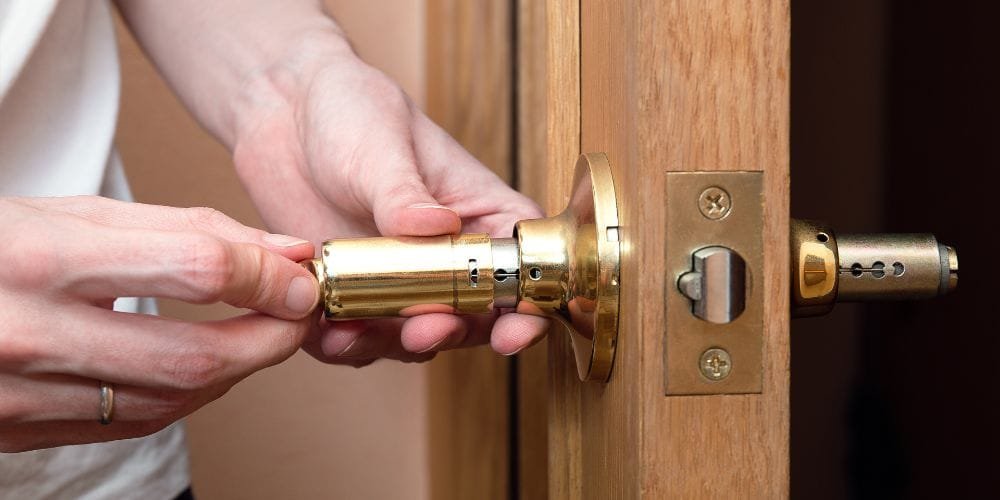First, even though installing a new door knob or replacing a broken one sounds like a daunting task, it is a very simple and doable DIY project. Although the parts of a door knob may seem complicated, you do not need to call a handyman to get it done. With the proper measurements and the right knob for your door, you can easily install it yourself and secure it in place. Plus, if you are also looking for door installation in San Antonio or need window repair San Antonio, we are here to help!
Part 1: Installing the Latch
1. Remove Old Door knob:
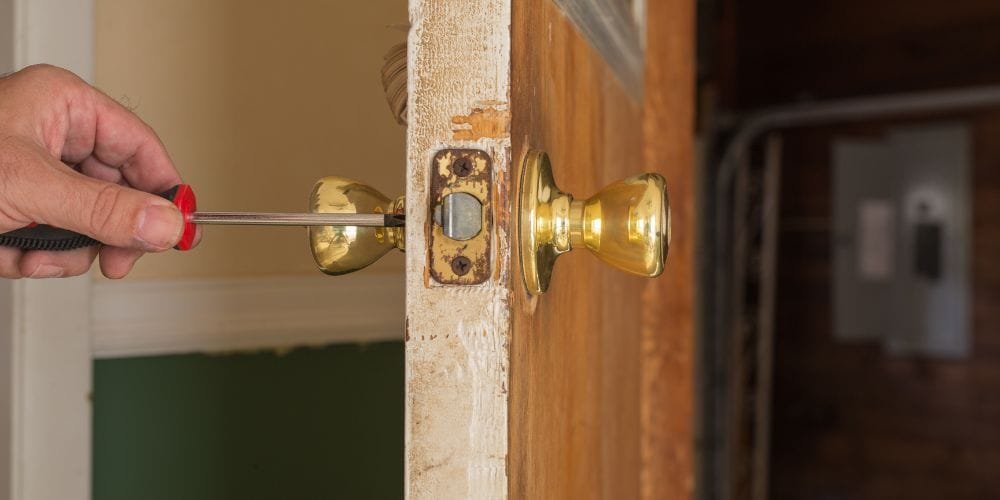
If you haven’t already, remove the old doorknob, latch, and strike plate. To remove the strike plate, use a screwdriver to unscrew the top and bottom screws, then gently lift it out from the side of the door.
This metal piece attached to the door frame, with a hole either round or rectangular for the latch to fit into, is the strike plate. When you’re replacing the latch, it’s often best to replace the strike plate also because most new latches come with a strike plate of their own that is made to perfectly fit the lock.
2. Install a Latch Plate:
Install a latch plate over the latch to protect your door and make sure it fits correctly. Latch plates are either round or rectangular, depending on the shape of the mortise hole in the door where the latch sits. If your door mortise needs a different shape than the plate that came with your latch, measure the current plate and buy one that fits.
Replace it with a new one by taking out the old plate carefully and placing the new one on top of the latch. This type of plate prevents the latch from scratching the door while it is placed inside. The most common type of rectangular latch plate is for standard doors.
3. Insert the Latch:
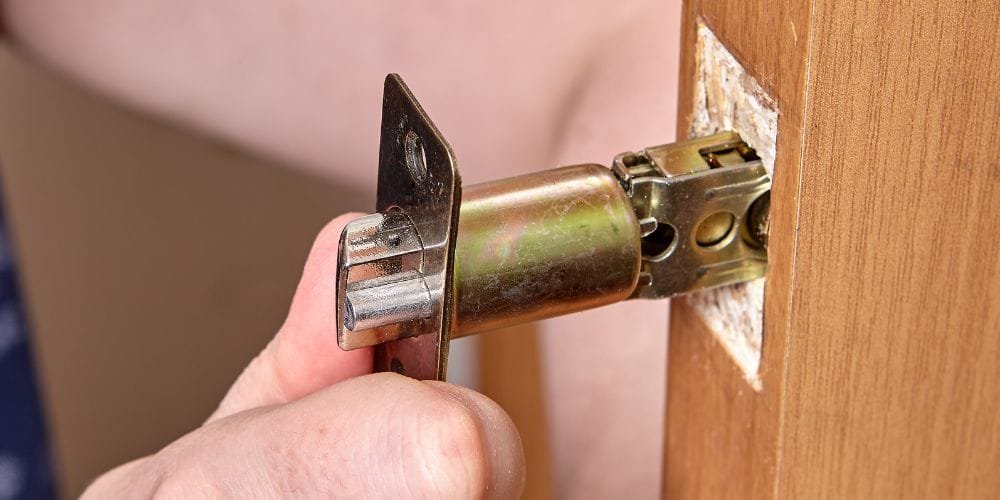
Insert the latch into the hole on the edge of the door, ensuring that the flat, angled side faces the door jamb. If the beveled side does not face the jamb, the door may not close properly.
4. Place a Wooden Block:
Place a wooden block against the end of the latch and gently tap it with a hammer to push the latch into place. If the latch doesn’t slide in completely, use a thicker, rectangular wooden block to cover the latch’s end and tap it again with the hammer until the back of the latch is flush with the hole.
5. Fasten the latch:
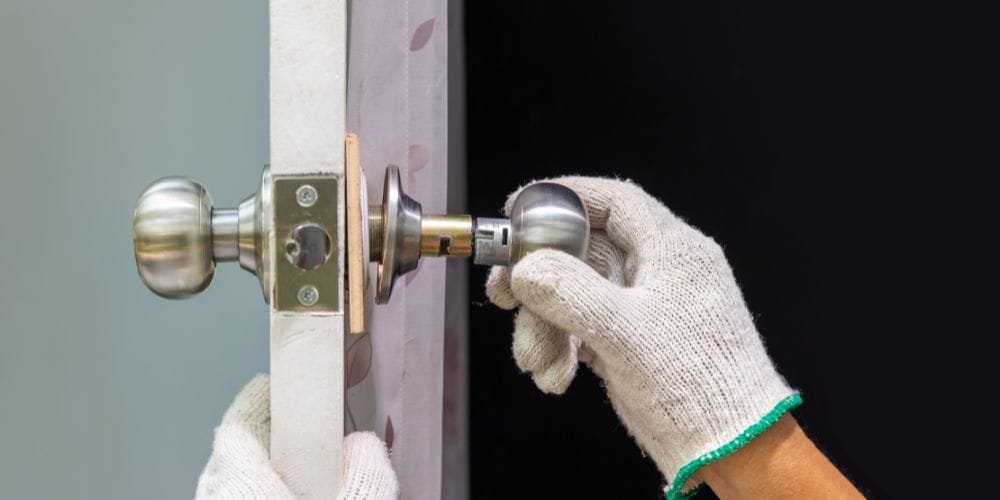
Fasten the latch at one of its corners by utilizing screws from the packing material. There should be either a top or bottom attachment to the door usually found. Don’t get new ones separately. Generally, all come together as a unit with their necessary fixatives in them.
Part 2: Attach the Door Knob
1. Install the First Half of the Doorknob:
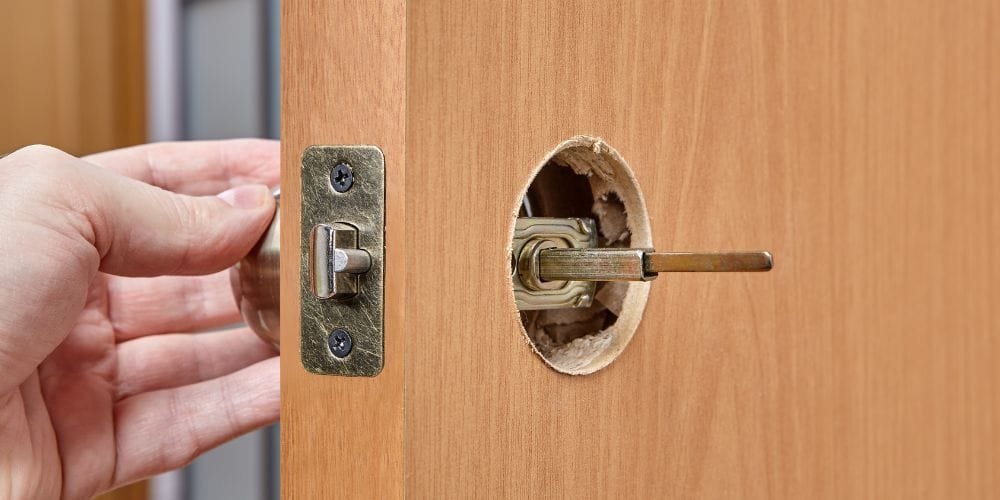
Begin with the half of the doorknob containing a square steel peg. Push this half through the latch mechanism. The peg should fit snugly into place.
2. Align the other half:
Put the other half of the doorknob on the other side of the door. Tilt it to ensure the screw holes align.
3. Assemble both sides:
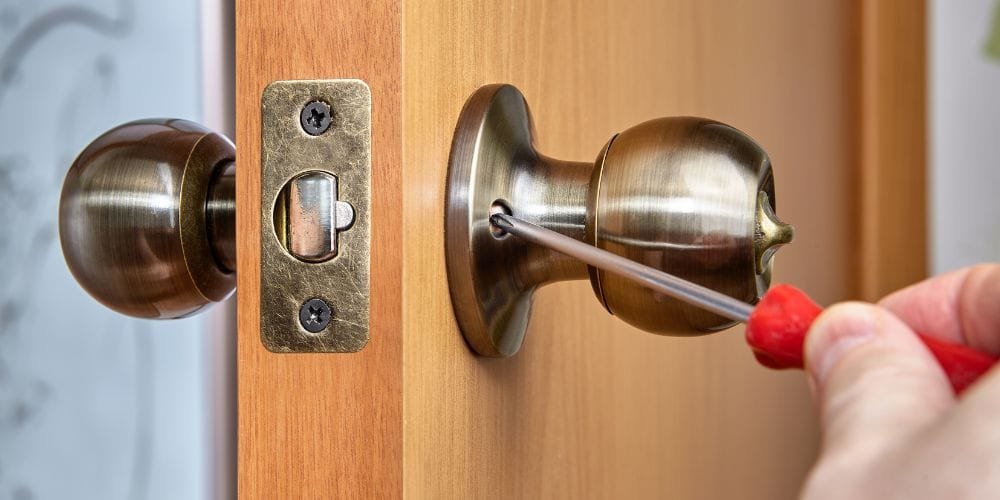
Press both halves into place, making sure they align properly. If the sides don’t fit smoothly or feel loose, pull them apart and adjust their alignment before trying again.
4. Secure with Screws:
The screws could be screwed into the holes inside the doorknob connecting the two sides of the doorknob to the door; most doorknobs require two screws, one for the top and the bottom. The screws should be tightened such that the doorknob is secure and firm.
Now your doorknob is installed correctly and ready for use.
Also read, What are Some Common Door Issues?
Part 3. Final Touches and Testing
1. Tighten Loose Screws:
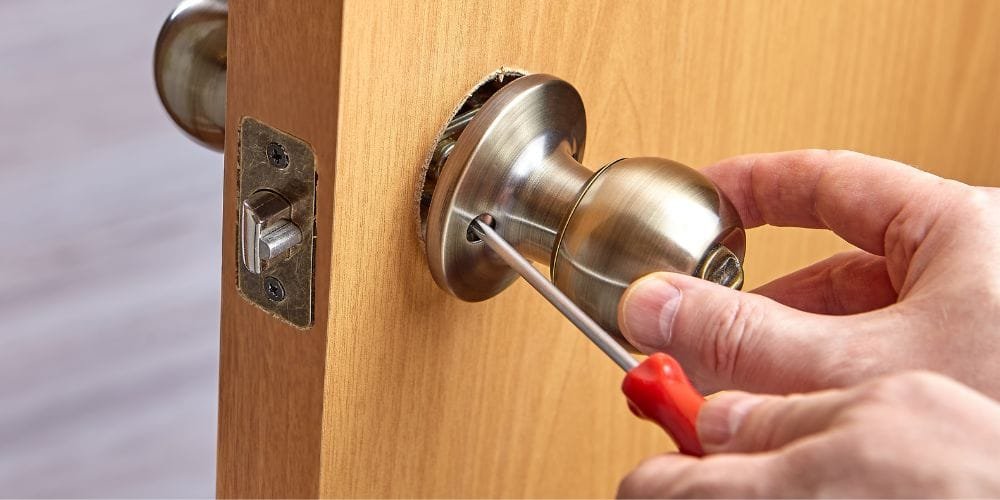
Stuff wood putty into any loose or oversized screw holes. If the screw holes from the previous doorknob are too large for the new one, apply some hardening wood putty or filler. Allow the product to dry for the recommended time which is usually about 30 minutes or a few hours before moving on.
2. Install the New Strike Plate:
Mount the strike plate to the latch and door frame, using the screws provided. If the latch does not fit through the strike plate, you may need to get a strike plate that fits better.3. Test the doorknob:
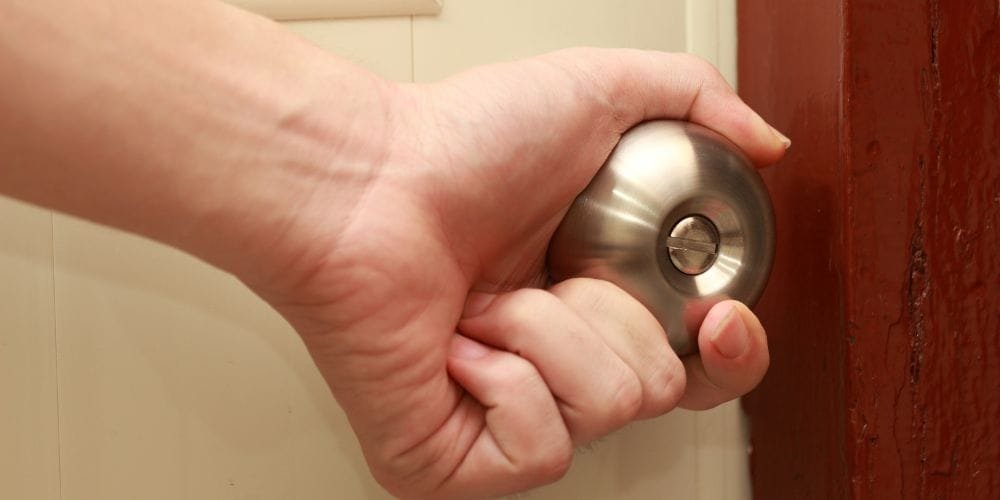
Open and close the door several times to ensure that the latch moves smoothly against the door jamb and secures properly. Turn the handle to check for looseness—tighten the screws if necessary. If the screw holes are loose, use wood putty to make adjustments.
4. Touch Up the Area:
If your new doorknob is smaller than the old one, exposed areas around the knob may look worn or unpainted. Use paint or wood stain to touch up any visible spots. If your door looks outdated or worn, consider repainting or refinishing the entire door for a fresh, polished look.
These final steps ensure your door looks great and functions perfectly with its new hardware.
Need Help with More Than Doorknobs?
Enhancing your home with expert door and window installation in San Antonio, TX, repairing existing fixtures, or ensuring top-quality upgrades requires professional expertise. With just one call, you can rely on our skilled team to bring your vision to life with precision and care. Whether you want to improve functionality, boost energy efficiency, or elevate your home’s curb appeal, Mr Fixer is here to make the process seamless and stress-free.
Ready to begin your transformation? Contact Mr. Fixer today for reliable, budget-friendly solutions to your needs. Let’s create the home you’ve always dreamed of—quickly, affordably, and professionally!

